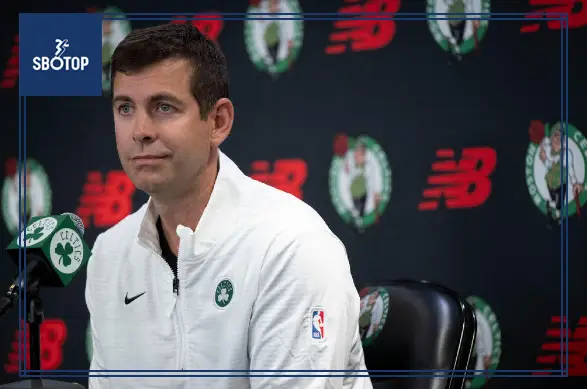The Boston Celtics are entering the 2025–2026 NBA season with a significantly altered roster, sparking speculation about a full-scale rebuild. However, President of Basketball Operations and General Manager Brad Stevens insists this is not the case. According to Stevens, the team is not tearing things down but rather “refreshing” the lineup — a calculated move primarily motivated by the need to avoid harsh penalties associated with the NBA’s second apron rule.
In a press conference held on Tuesday, July 8, Stevens addressed the recent roster shake-ups, including high-profile trades involving Kristaps Porziņģis and Jrue Holiday, and the uncertain free agency status of veteran Al Horford. Despite these changes, he was clear: Boston still intends to compete at the highest level.
“We’ve known for a long time that difficult decisions were coming. The second apron is the main reason those trades happened. I think that’s been pretty evident. The penalties are very real,” Stevens stated firmly.
“This is about preserving flexibility, staying competitive, and carrying forward the momentum of the past two seasons.”
What Is the NBA Second Apron Rule?
Under the NBA’s new collective bargaining agreement, teams that exceed the second luxury tax threshold (the second apron) face severe limitations. These include restrictions on sign-and-trade deals, using certain exceptions, and acquiring players in-season through buyouts or trades. For a team like the Celtics — who have been regular contenders and spenders — staying above the second apron would not only be financially costly but also strategically limiting.
Had the Celtics kept their core intact while absorbing injuries and performance risk, they could have faced a combined salary and luxury tax bill exceeding $550 million in the 2025–2026 season. Stevens and the Celtics’ front office ultimately determined this path was unsustainable.
Injury Concerns Shaped the Decision
The financial implications weren’t the only concern. Injuries played a significant role in reshaping Boston’s offseason strategy.
Jayson Tatum, the team’s cornerstone, is expected to miss the entire season due to a significant Achilles injury sustained late in the playoffs. Jaylen Brown, although still active, recently underwent minor knee surgery and is not yet at full strength.
Without Tatum — and with uncertainty surrounding other key players — the Celtics’ chances of repeating their 2024 NBA Championship run were slim. The 2024–25 season ended in disappointment, with Boston falling to the New York Knicks in the Eastern Conference Semifinals, a series where Tatum’s injury proved costly.
“You can’t keep the exact same team when one of your superstars is out for the year,” Stevens noted. “It just wouldn’t be a smart or sustainable choice.”
Not a Rebuild — A Refresh
Despite the significant changes, Stevens pushed back on the notion that the Celtics are entering a rebuilding phase. Instead, he described the team’s direction as a “refresh”, noting that several core players remain and that the organization still aims to compete at a high level.
“I don’t like the word ‘rebuild.’ That’s not what we’re doing,” said the 48-year-old executive. “We’re bringing in new players, making adjustments, but our goals remain the same — to win, to compete, and to fight hard every night.”
He also expressed confidence in the existing talent within the squad, hinting that more moves may be on the horizon to complement the retooled roster.
“We believe in the players we have. We’re looking to add more who can fit into our culture and help us build a solid, competitive unit,” he added.
Eyes on the Future — Financial Flexibility and Young Talent
While it may not look like the Celtics team fans saw win the championship in 2024, the new version of the roster is designed for long-term sustainability. By avoiding the second apron, Boston keeps the flexibility to make in-season moves and retain promising young talent in the years to come.
The restructured roster may not have the same star power — at least temporarily — but it offers the Celtics breathing room to evolve, especially with Tatum’s return in 2026. With Brad Stevens steering the ship, Boston remains focused on staying competitive while adapting to the financial realities of the modern NBA.
ALSO READ :










